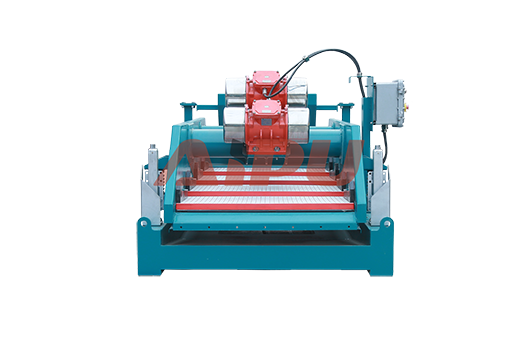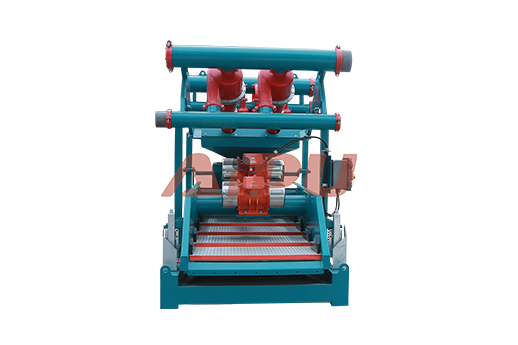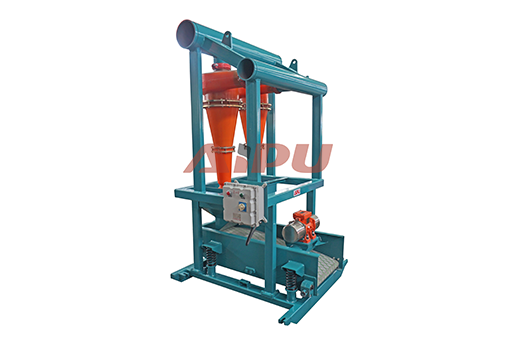Advanced Solutions in Mineral Exploration Drilling
Drilling operations are a crucial part of various industries, especially in oil and gas exploration. However, one persistent challenge is drilling fluid contamination. Solids control equipment emerges as the key solution to this problem, ensuring the efficiency and safety of drilling processes.
The Problem of Drilling Fluid Contamination
Drilling fluid, also known as drilling mud, plays multiple vital roles in drilling operations. It cools and lubricates the drill bit, carries cuttings to the surface, and maintains wellbore stability. But during the drilling process, it often gets contaminated with various solids such as rock cuttings, sand, and silt. These contaminants can increase the density and viscosity of the drilling fluid, which in turn can lead to issues like reduced drilling efficiency, increased wear and tear on equipment, and even wellbore instability. If not properly addressed, drilling fluid contamination can result in costly downtime and potential safety hazards.
How Solids Control Equipment Works
Solids control equipment is designed to remove unwanted solids from the drilling fluid, restoring its properties and functionality. The process typically involves a series of equipment working in sequence. The first stage usually includes shale shakers, which use vibrating screens to separate larger cuttings from the drilling fluid. After that, desanders and desilters are used to remove finer particles. These devices use centrifugal force to separate the solids from the fluid. Finally, decanter centrifuges can be employed to further remove ultra - fine solids, achieving a high - level of purification of the drilling fluid.
Benefits of Using Solids Control Equipment
Using solids control equipment brings numerous benefits. Firstly, it significantly improves drilling efficiency. By maintaining the proper properties of the drilling fluid, the drill bit can operate more smoothly, reducing the time and energy required for drilling. Secondly, it extends the lifespan of drilling equipment. With less abrasive solids in the fluid, the wear and tear on pumps, drill bits, and other components are reduced, saving on maintenance and replacement costs. Thirdly, it is environmentally friendly. Properly treated drilling fluid can be reused, reducing the amount of waste generated and minimizing the environmental impact of drilling operations.
Choosing the Right Solids Control Equipment
Selecting the appropriate solids control equipment is crucial for effective contamination control. Factors such as the type of drilling operation, the characteristics of the drilling fluid, and the size and nature of the contaminants need to be considered. For example, in offshore drilling, equipment that is compact and corrosion - resistant may be preferred. Additionally, the capacity and efficiency of the equipment should match the scale of the drilling project. Regular maintenance and monitoring of the equipment are also essential to ensure its long - term performance and reliability.
In conclusion, solids control equipment is an indispensable solution to drilling fluid contamination. By effectively removing solids from the drilling fluid, it enhances the efficiency, safety, and environmental friendliness of drilling operations.

The Problem of Drilling Fluid Contamination
Drilling fluid, also known as drilling mud, plays multiple vital roles in drilling operations. It cools and lubricates the drill bit, carries cuttings to the surface, and maintains wellbore stability. But during the drilling process, it often gets contaminated with various solids such as rock cuttings, sand, and silt. These contaminants can increase the density and viscosity of the drilling fluid, which in turn can lead to issues like reduced drilling efficiency, increased wear and tear on equipment, and even wellbore instability. If not properly addressed, drilling fluid contamination can result in costly downtime and potential safety hazards.
How Solids Control Equipment Works
Solids control equipment is designed to remove unwanted solids from the drilling fluid, restoring its properties and functionality. The process typically involves a series of equipment working in sequence. The first stage usually includes shale shakers, which use vibrating screens to separate larger cuttings from the drilling fluid. After that, desanders and desilters are used to remove finer particles. These devices use centrifugal force to separate the solids from the fluid. Finally, decanter centrifuges can be employed to further remove ultra - fine solids, achieving a high - level of purification of the drilling fluid.
Benefits of Using Solids Control Equipment
Using solids control equipment brings numerous benefits. Firstly, it significantly improves drilling efficiency. By maintaining the proper properties of the drilling fluid, the drill bit can operate more smoothly, reducing the time and energy required for drilling. Secondly, it extends the lifespan of drilling equipment. With less abrasive solids in the fluid, the wear and tear on pumps, drill bits, and other components are reduced, saving on maintenance and replacement costs. Thirdly, it is environmentally friendly. Properly treated drilling fluid can be reused, reducing the amount of waste generated and minimizing the environmental impact of drilling operations.
Choosing the Right Solids Control Equipment
Selecting the appropriate solids control equipment is crucial for effective contamination control. Factors such as the type of drilling operation, the characteristics of the drilling fluid, and the size and nature of the contaminants need to be considered. For example, in offshore drilling, equipment that is compact and corrosion - resistant may be preferred. Additionally, the capacity and efficiency of the equipment should match the scale of the drilling project. Regular maintenance and monitoring of the equipment are also essential to ensure its long - term performance and reliability.
In conclusion, solids control equipment is an indispensable solution to drilling fluid contamination. By effectively removing solids from the drilling fluid, it enhances the efficiency, safety, and environmental friendliness of drilling operations.








